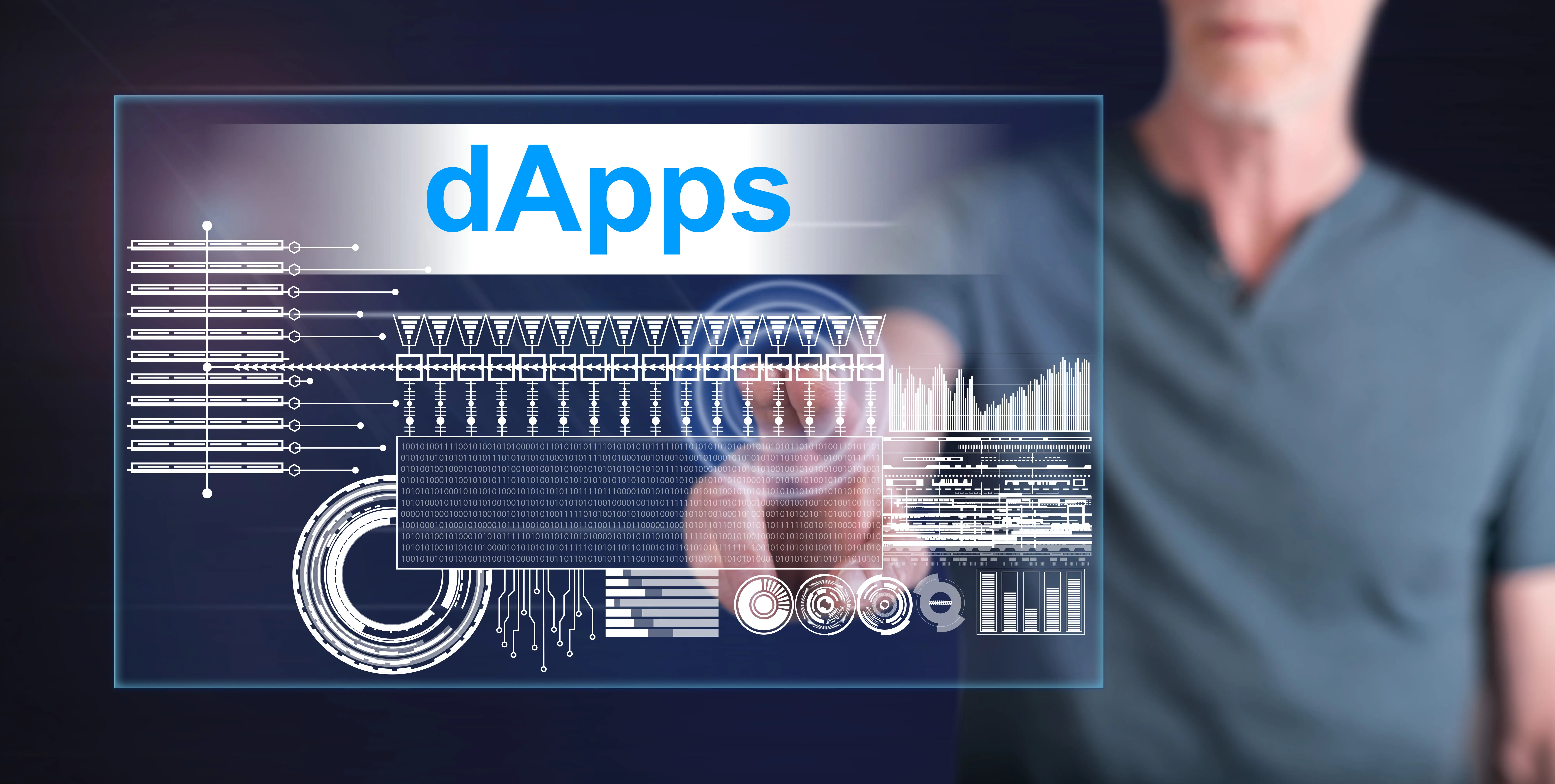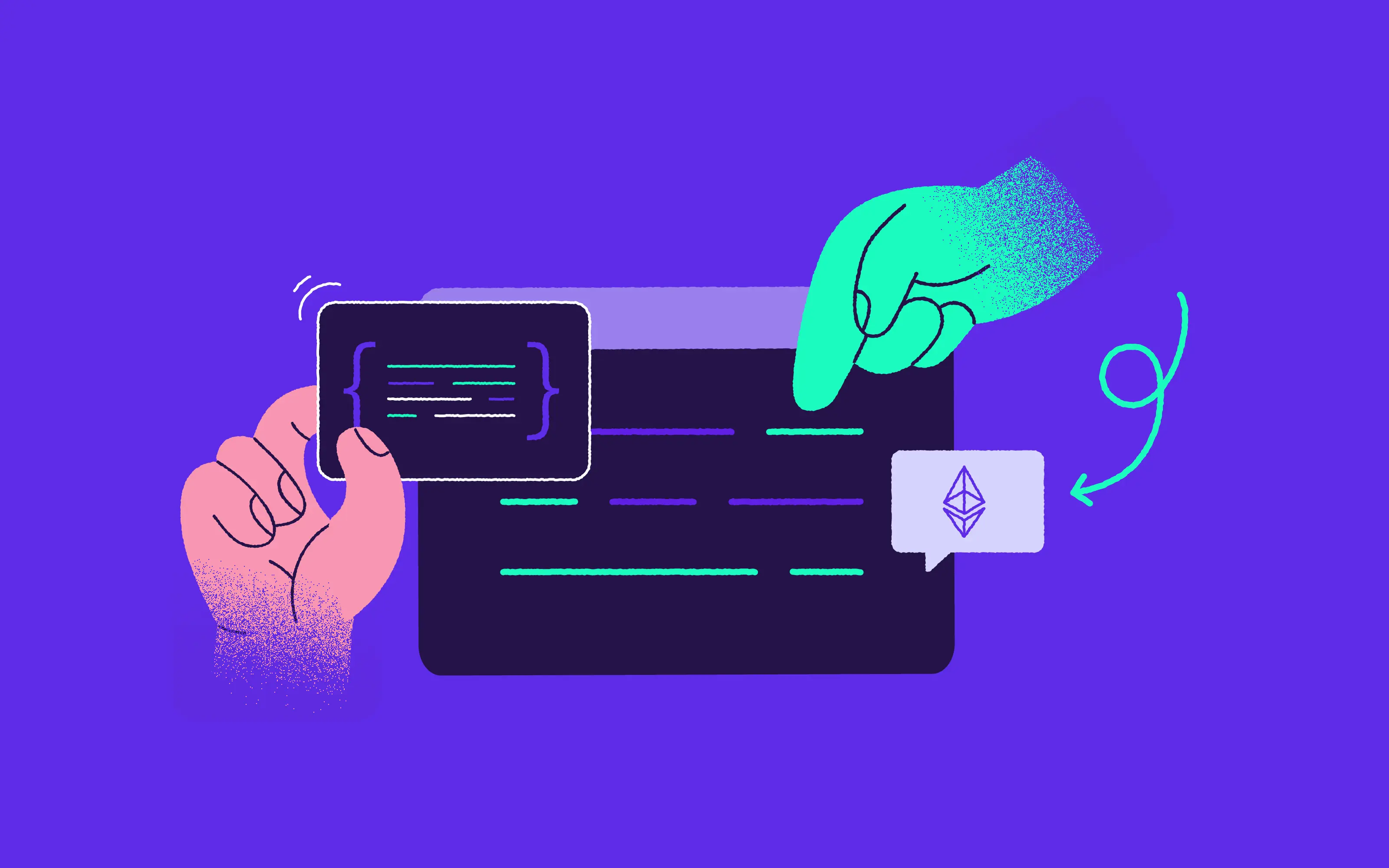
DApps are all the rage these days, serving as the focal point of massive blockchain adoption. There are nearly 4,000 active decentralized applications, according to State of the DApps. The trend is spreading rapidly, igniting a desire among product owners to create their own. Unfortunately, some of them run into a serious problem: the slowness of their decentralized applications. This happens when the blockchain's decentralized network can't handle the rampant influx of new users. But there is a way to solve it. This is called scaling.
Knowing that DApps can operate independently of centralized financial institutions, it's hard to envision a more rebellious concept in the world of technology. But, DApps, or Decentralized Applications are much more. Their eerie brilliance manifests itself in the development of an entire open-source software ecosystem that is innovative, secure, and resilient.
In Case You Still Don’t Know: What Is a DApp?
A DApp is an application that operates on a decentralized network. It combines a smart contract and a frontend user interface. Simply put, users can use DApps as traditional apps, taking advantage of the available features such as social platforms, entertainment, and games.
The main difference is that user data exists on a blockchain network. These circumstances remove the need for third-party entities to determine transaction and usage terms.
Also, many DApps are tools that help consumers gain access to decentralized finance, or DeFi. These are blockchain-based financial applications that enable digital transactions between parties. DeFi matches perfectly with crypto, leaving the door ajar for lending and investing.
If you want to learn more about why DApps are greater than regular applications, check out this article.
DApps Are BFFs with Ethereum Blockchain
The Ethereum network has long been a driving force behind the growing trend of decentralized applications. Programs that operate specifically on the Ethereum network are Ethereum DApps.
This is due to smart contracts, which have been primarily deployed on the Ethereum network and store data on the platform's blockchain.
Smart contracts are computer programs that execute transactions automatically whenever all parties meet certain criteria and eliminate the need for a middleman.
To be clear, a DApp is a type of button that allows smart contracts to function. It enables two anonymous persons to perform a transaction without the requirement for a central authority or intermediary. It reduces formalities and costs, simplifying transaction processing.
It's fair to say that smart contracts are cheaper, faster, and more secure than traditional payment systems. They help users save time and avoid controversy. It's no surprise, then, why smart contracts have cut a dash.
The First DApp on Ethereum Blockchain
April 22, 2016, marked a watershed moment for DApps. That day, the first DApp appeared on the Ethereum blockchain network.
A year later, the number of DApps in development continued to increase at a more rapid rate. Almost every day since February 2018, a new DApp has emerged.
As previously stated, 4,000 full-fledged DApps are currently operational. Aside from the Ethereum blockchain network, blockchains such as Cardano, Solana, and Polkadot have successfully introduced decentralized applications that also use smart contracts.

What Do DApps Require?
Speed
Every product owner's biggest ambition is to build a successful product. But, as the old saying goes, "Be careful what you wish for." And this is especially true when it comes to DApps.
DApps operate on a blockchain network that has its own set of limitations. The more DApp users, the greater the chance that they will begin to slow down in their performance.
Nowadays, the most important aspect in deciding whether or not to use an application is its speed. Users will most likely go to their faster alternatives if the DApp they’re using is noticeably slow.
Congestion
All of the programs that operate on the blockchain network require computing power. In fact, DApps need more computing power than regular apps. When a single DApp consumes too many computational resources, it causes a bottleneck in the network.
This results in a slew of unconfirmed pending transactions in DApps. Sooner or later DApp developers will resolve this issue but for now, it's still a long way off.
Are DApps Scalable?
DApp technology as such is still under development. It means that product owners have hit the ground running to seek remedies to the lagging problem.
It entails figuring out how to speed up transactions and boost throughput (the number of transactions per second). All of this should help to keep DApps from becoming too sluggish.
The million-dollar question is how they're going to do it. "By scaling," is the easy answer.
A scalable app is a godsend. It involves a faster speed, more flexibility, and the ability to add new features and functions.
But How to Scale a DApp?
To begin with, it’s important to note that there are two types of scaling running concurrently: on-chain and off-chain scaling.
The most common on-chain scaling prescription is to improve the throughput of the network's base layer by increasing the amount of data that can fit into each block.
Unfortunately, improving the scalability of existing blockchain base layers is unlikely to achieve.
The solution to this problem is to create additional layers of transactions that can rely on the core blockchain. Off-chain scaling works in this manner. It entails combining multiple payments into a single transaction, as well as creating payment channels and sidechains.
The goal of off-chain scaling is to reduce the main blockchain's role to that of a trust and arbitration layer.

Best Practices in Scaling Ethereum DApps
State Channels
Users can perform peer-to-peer transactions "off-chain" via State Channels, only transferring messages onto the main chain when they desire to depart the channel. They're designed similarly to Bitcoin's Lightning Network.
They are essentially payment channels in which users transact value outside of the main chain and then return to the main chain to settle the channel. This is simple in terms of functionality.
Casper
To solve a cryptographic equation and mine a block using PoW, miners must currently expend energy. If they answer the problem, they get the reward, but the process uses a lot of energy (and will continue to require more and more).
This is both expensive and inefficient. Casper is a protocol for converting Ethereum's current Proof of Work (PoW) model to Proof of Stake, in which "validators" replace miners and "validate" (rather than mine) blocks onto the blockchain network.
Sharding
The process of horizontally partitioning a database to disperse the load is known as sharding. By generating additional chains known as "shards," sharding minimizes network congestion and boosts transactions per second in the Ethereum context.
However, there is a disadvantage. Sharding requires a lot of research and testing before it can be implemented, making it one of the most challenging solutions across the Ethereum network.
Plasma
Plasma is a scaling technique that conducts transactions "off-chain," or off the main Ethereum decentralized network. Many blockchains (known as "child chains") can branch off from the original blockchain (referred to as the "root chain").
As a result, each child chain can process and keep its own transaction records while still depending on the underlying security of the root chain.
Raiden
Raiden is an off-chain scaling solution that allows nodes to keep track of each other's transactions without requiring each transaction to be verified by the root chain. Between two nodes, one can construct a "state channel". It's a two-way channel between users.
To ensure immutability, "messages" — in the form of transactions — transfer between the two nodes and are signed by both participants.
Key Takeaways
Some argue that a future where many things are decentralized is a utopian vision. It could not be further from the truth. DApps are proving to be a technology of the future, bringing with them various innovations and moving blockchain technology forward.
Nonetheless, there are costs associated with this increase. Product owners who want to make their DApps a household name should start thinking about growing their DApps now. Scalability is an important factor that helps DApps manage the high demand. It's also a matter of improved resource management.




